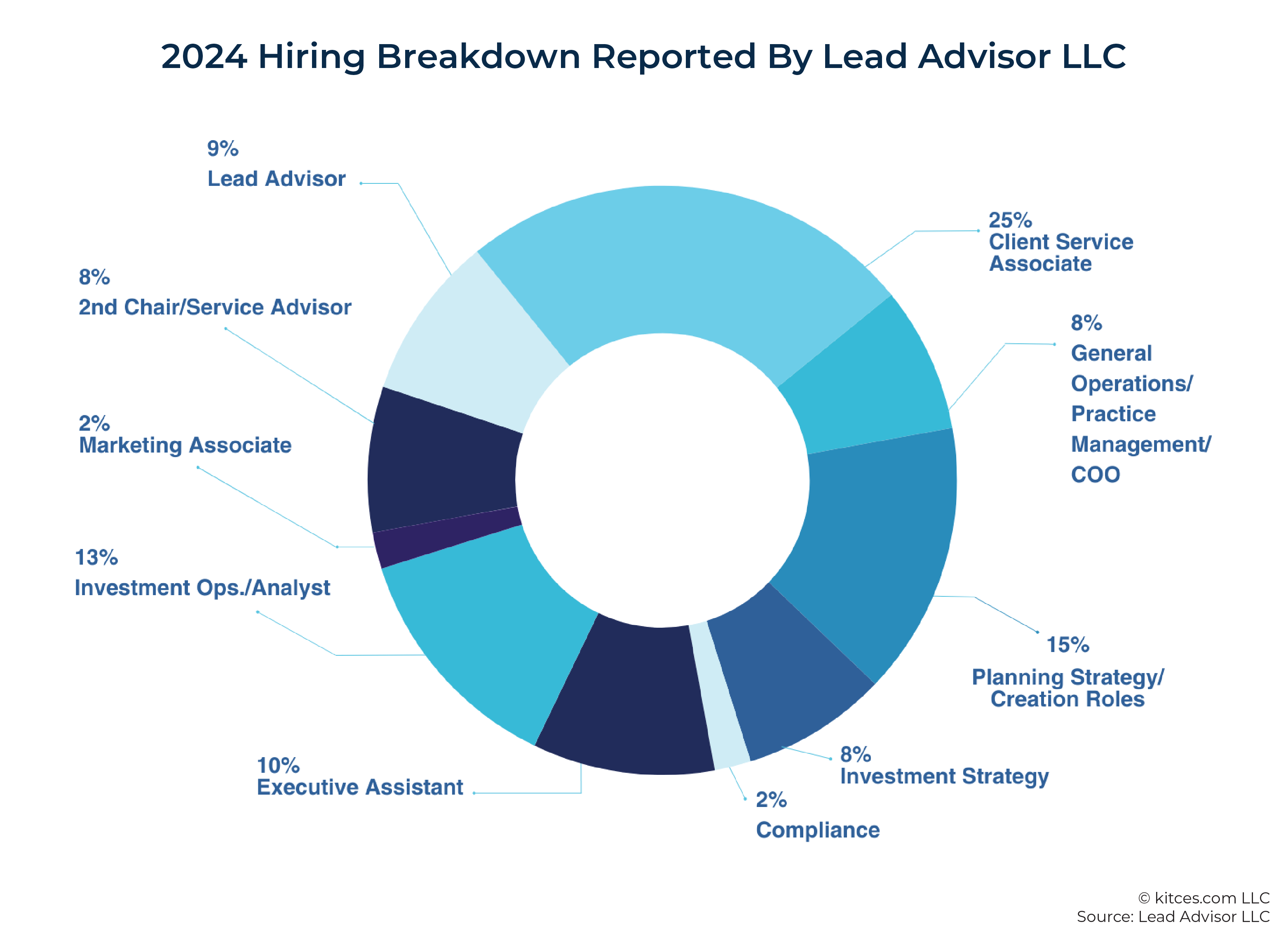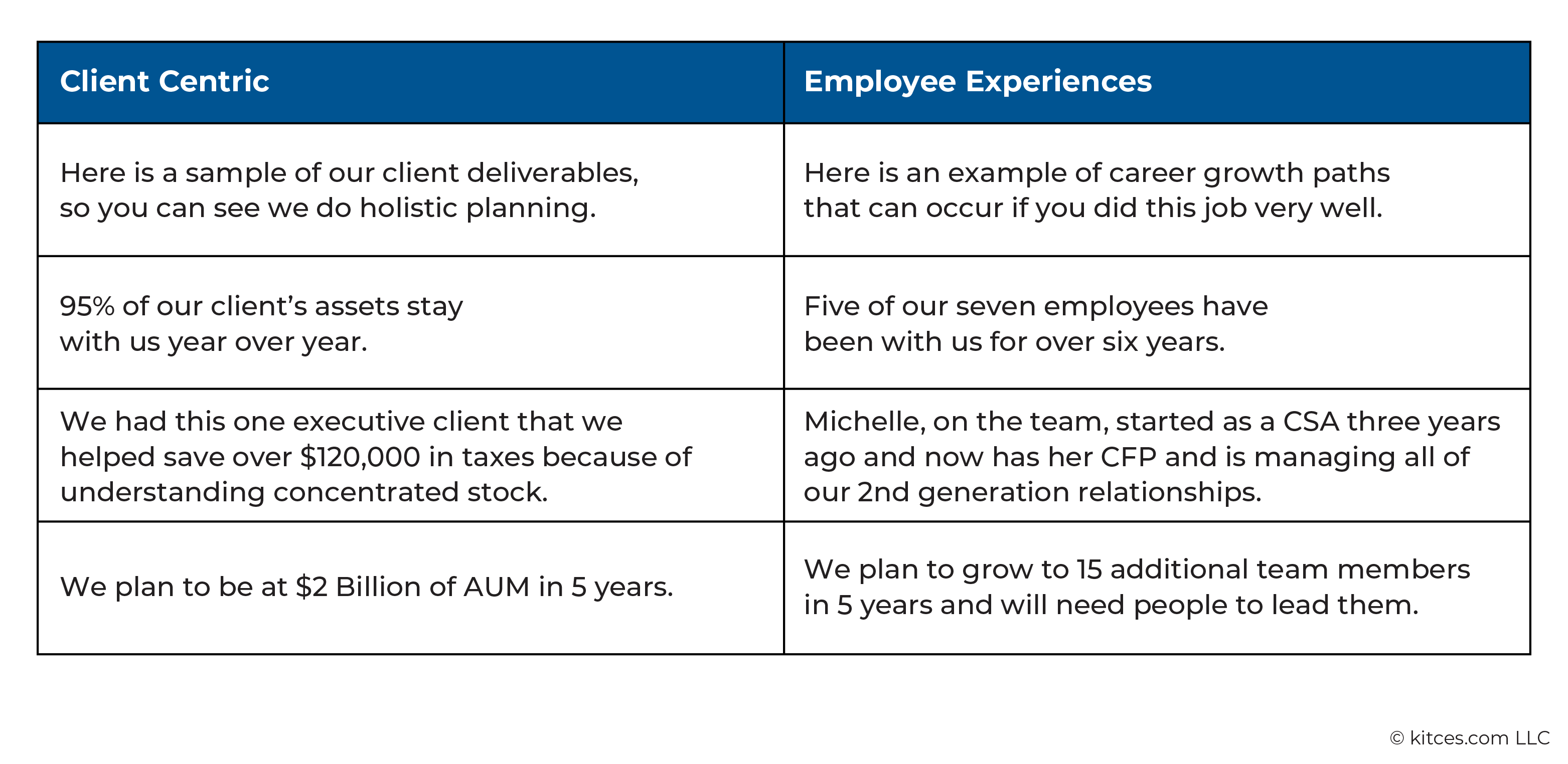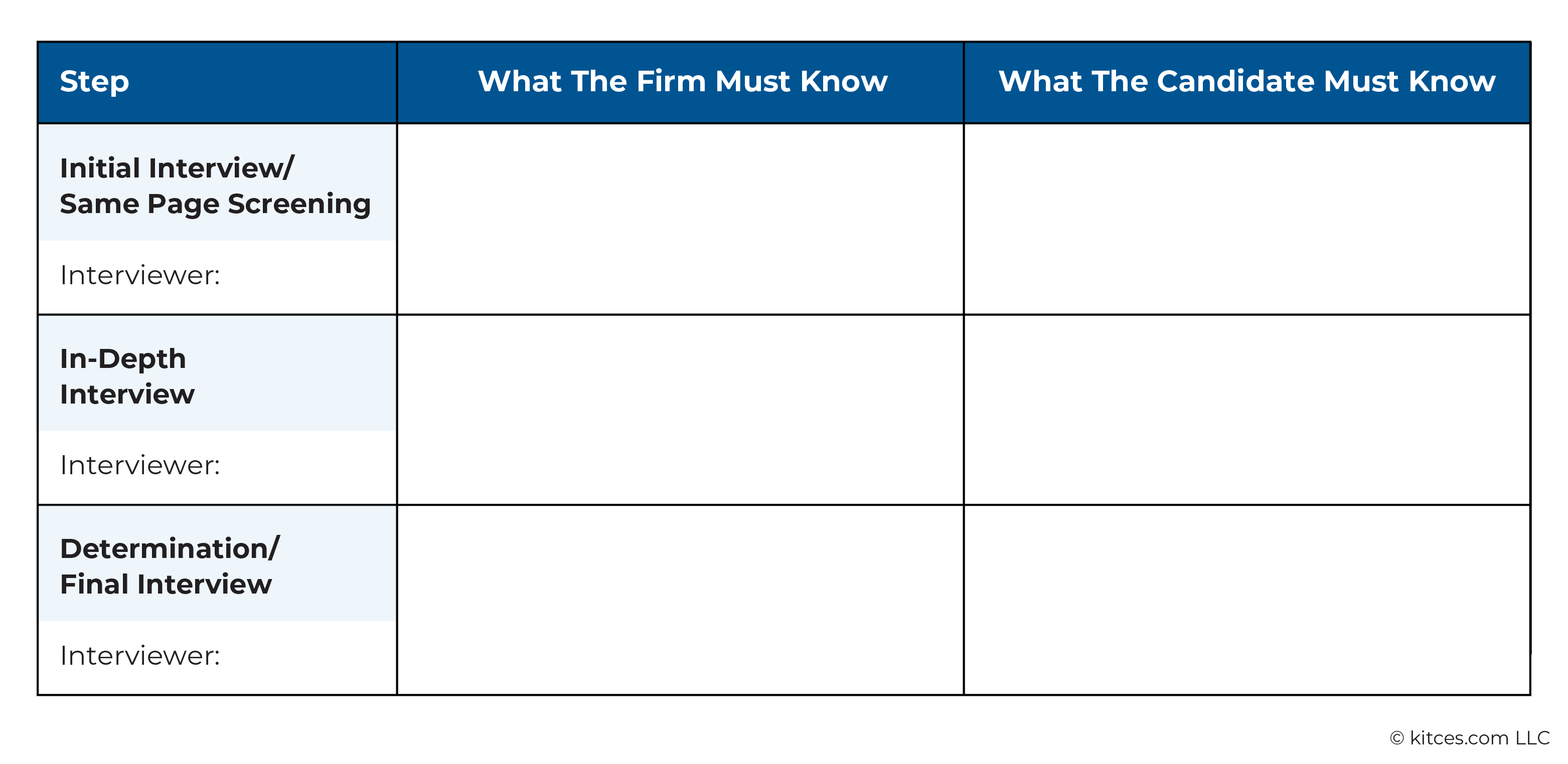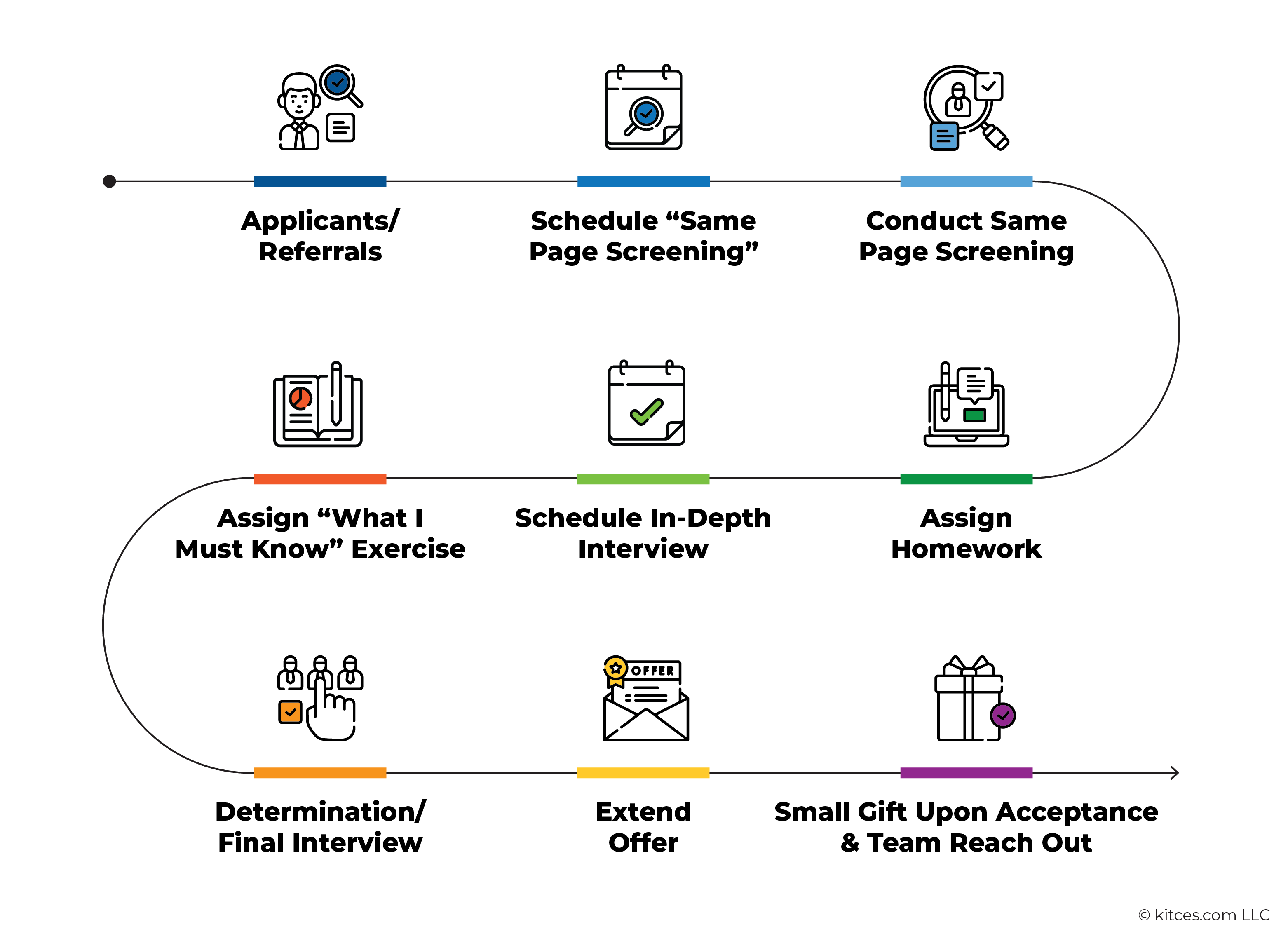Executive Summary
When it comes to growing a practice for the long term, talent acquisition is just as important as client acquisition. The people who handle the day-to-day work of the firm are crucial to its operations, particularly as firm owners and other leadership focus their time on higher-level strategic initiatives rather than routine operational details. However, developing a strong hiring process can be challenging – and it's easy to overlook its importance until the next hiring need arises. A firm with a clear and well-defined hiring process can attract stronger candidates and evaluate them more effectively, creating a compound effect that strengthens the firm over time.
In this guest post, Eddy Ricci, founding partner of Lead Advisor, explores how firms can refine their hiring processes to attract top talent and how small firms can stand out in a competitive talent market.
Ideally, the interview process is mutual: the firm needs enough information about the candidate to make an informed decision, and the candidate needs enough insight into the firm to do the same. To that end, interviewers can benefit from emphasizing speed (aiming to complete the process within 30 calendar days), connection, and candidness about the firm's strengths and areas for improvement. Additionally, discussing how the firm's core processes, values, and growth opportunities may directly impact the candidate can help candidates better understand what it's like to work at the firm.
A proactive hiring process considers all components of the role, including compensation, team dynamics, and the purpose of the role (especially if it's being refilled). It also plans for a smooth onboarding experience. Ideally, the process is intentional, documented, and repeatable – minimizing internal stress and reducing the time required to make a successful hire. This foundation can be built by creating not only a detailed job description but also an onboarding plan and ensuring the team is aligned and prepared for the new hire.
Once the job is listed and an initial candidate pool is formed, the hiring process can follow three interview stages. The first stage is a brief 'same page' screening to confirm the candidate's qualifications, answer initial questions, and outline the next steps in the process. Some firms may also include a work assessment after this step. The second stage is an in-depth interview, focusing on the candidate's technical skills and alignment with the firm's goals and values. At this point, candidates can also ask detailed questions about their potential role in the firm. The third and final stage is a mutual alignment interview, which addresses any remaining questions and ensures both sides are ready to move forward. By the end of the process, both the candidate and the firm should feel excited about the decision to move forward!
The key point is that firms that craft a repeatable hiring process can create a better candidate experience. A warm, connection-focused, and communicative interview process not only helps firms stand out to candidates but also improves the quality of their evaluations – ultimately increasing the likelihood of finding the perfect mutual fit!
For any growing practice, there will come a time when talent acquisition is equally as important as client acquisition. Whether advisors are scaling their business for enterprise value or wish to grow a lifestyle practice, they will probably need to add talented professionals to their teams. Yet, we often hear from advicers that "We aren't great at hiring" or "I love everyone, so hiring never works for me." Even independent practices with a COO or Practice Director can struggle with having an intentional, attractive, and informative hiring process.
And while advisors likely wouldn't 'wing' the planning process for a top client that they meet with three to four times per year – an approach that demands a high level of care – it's equally important to approach the same diligence to the hiring process for professionals who serve as an extension of the firm and its brand.
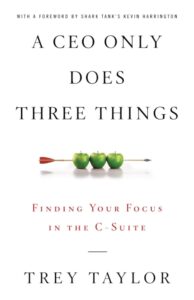 Encouraging team building is a key responsibility for leaders shifting from a planner/advisor role to a CEO role to ensure the business's success as it grows. In his book, "A CEO Only Does Three Things", author Trey Taylor emphasizes that the head of an organization needs to ensure three key elements: a clear and well-communicated vision that the team understands, the right team, and sound financial management. Advicers may excel at being visionaries and, in theory, should have strong financial management skills… but how prepared are they to attract and build the right team?
Encouraging team building is a key responsibility for leaders shifting from a planner/advisor role to a CEO role to ensure the business's success as it grows. In his book, "A CEO Only Does Three Things", author Trey Taylor emphasizes that the head of an organization needs to ensure three key elements: a clear and well-communicated vision that the team understands, the right team, and sound financial management. Advicers may excel at being visionaries and, in theory, should have strong financial management skills… but how prepared are they to attract and build the right team?
We work with wealth management practices every day to develop effective talent strategies and actively source and interview candidates for their firms. Since the pandemic, we have conducted over 15,000 interviews with professionals in (or looking to enter) the wealth management profession. Through our consulting and matchmaking services, we gain real-time insights into what works and what doesn't for both clients and candidates. This unique perspective lets us share the strategies top-performing firms use to successfully attract top talent.
The Challenge Of Attracting Talent For RIA Firm Owners
Attracting talent remains a top concern for RIA firm owners. According to the Schwab Advisor Service's 2022 Independent Advisor Outlook Study, talent is the #2 barrier to overall firm growth, second only to balancing time and priorities. In fact, 37% of responding firms named finding talent as their #1 challenge. Yet, the industry's obsession with retaining financial advisors often overshadows the retention challenges for critical support roles – the very positions that allow advisors to operate at their highest and best use.
Like many small business owners, advisory practices feel the consequences of employee turnover through slowed growth, service disruptions, and diminished team morale. The hiring trends within advisory firms reflect these challenges. The graphic below offers a look at the percentage breakdown of placements Lead Advisor LLC had for wealth management practices. As shown in the graphic below, over half of the hires for 2024 were involved in financial planning support roles, where 25% of new hires were for client service associates, 15% for planning strategy/creation roles, and 13% for investment operations/analyst positions. There was also significant demand for lead (9%) or client-facing (8%) advisors. These trends highlight the ongoing need for talent across both client-facing and operational support functions.
These hiring challenges are further intensified by high employee turnover rates, particularly across non-advisor roles. For example, paraplanners typically leave their firms every two to four years, and Client Service Associates often depart within 18 months to three years. Notably, this trend is part of a broader workforce dynamic. The Millennial generation – born between 1980 and 1996 and representing the largest percentage of today's workforce – will change jobs every two to three years on average. Additionally, firms with fewer than 50 employees typically experience turnover rates of 15%–25% each year. For a practice of five employees, this often means needing to make at least one hire every year just to maintain the team, not to mention expanding it to support the firm's continued growth.
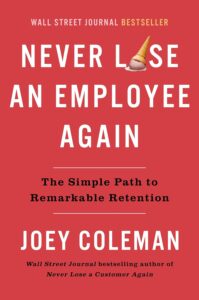 Turnover isn't just about finding replacements – it's costly, too. In his book "Never Lose An Employee Again", author Joey Coleman shares data that highlight the financial impact of employee turnover:
Turnover isn't just about finding replacements – it's costly, too. In his book "Never Lose An Employee Again", author Joey Coleman shares data that highlight the financial impact of employee turnover:
- GALLUP: Replacing an employee costs 0.5 to 2 times their annual salary.
- SHRM: Costs can range from 0.5 to 0.75 times the annual salary (six to nine months' pay by their survey terms)
- WYNHURST: Turnover costs can climb to 100%–300% of an employee's salary.
Published in 2023, Coleman's book also underscores the scale of the challenge, noting that 65% of employees are actively looking for new jobs, and 30% of employees leave their positions annually (across all industries and company sizes). With shorter employee tenures and the constant demands of client acquisition and AUM growth, getting hiring right isn't just important – it's essential.
The Drawbacks of Reactive Hiring In Advisory Firms
Reactive hiring – responding to immediate staffing needs rather than planning ahead – is a common challenge for advisory firms. This approach often increases the stress and compounds the hiring challenges that many firms face. Among the clients who engaged with our firm in 2022 and 2023 seeking help to find wealth management support talent, 67% lacked an intentional, documented, or repeatable interview and selection process – 90% of which were firms with fewer than 50 employees.
This reactive approach often leads firms to overlook critical elements of the hiring process, such as:
- Assessing team dynamics: How will the new hire fit in?
- Defining the role's purpose: What needs to change since the position is being refilled?
- Planning for success: How will the firm support the new hire to ensure they succeed?
The consequences of reactive hiring often show up in real-world scenarios, such as these unscheduled client conversations:
"Our director of investments is asking for more money, but we are already paying her way over market value. I think we need to start looking for a new investment expert."
"Our planning director just put in their two weeks' notice. They are the only one in the firm who knows how to build the plans."
"Our Client Service Associate messed up two rollover calls again this week. We need to replace them immediately."
In some cases, reactive hiring can also leave firms unprepared to seize growth opportunities:
Our Client: We're acquiring a new book of business and will need two service advisors to join the team.
Us: Congrats on the acquisition and for thinking ahead to support the book! That is proact—
Our Client: We actually acquired the book six months ago and need the service advisors ASAP.
Even firms with Chief Operating Officers or Practice Directors can struggle to move beyond reactive hiring. Developing a cohesive talent strategy – including a clear hiring philosophy and a mapped-out process for attracting, selecting, and onboarding candidates – is critical to overcoming these challenges.
Competing For Talent Against Larger Institutions
Like any small business, planning practices often face competition from larger institutions fishing in the same wealth management talent pool. Candidates may be weighing opportunities with a practice-level firm while also considering offers from other firms with a more corporate structure.
Larger institutions may be able to offer more in traditional compensation and comprehensive benefits packages. They may also provide clearly defined growth opportunities progressing in a laddered department structure. For example, a candidate at a larger institution may see a roadmap for advancement, moving from a client relationship advocate to a financial consultant associate, then to a financial consultant, wealth planner, private client advisor, VP of the division, and eventually regional VP. This clarity and visibility into growth paths may appeal to certain candidates – but those candidates may not be the right fit for a smaller practice's culture and goals.
Candidates may also have misinformed perceptions of stability when comparing AUM figures. For instance, a candidate working on a large corporate advisory team managing $2 billion in assets may hesitate when they learn a smaller practice they're considering only manages $300 million. They may not realize that the $300 million reflects client relationships that were built from scratch. Meanwhile, the $2 billion team could be managing assets generated by corporate lead systems, inherited books of business, or nationwide advertising efforts – assets that may not have the same relationship-driven foundation and could be taken away and reassigned at any point.
Still, the point is that some candidates may question whether a smaller practice's AUM can support their career aspirations or offer the stability they seek.
If smaller firms can't compete on traditional metrics like compensation, benefits, perceived stability, or clear growth paths, success often relies on other factors. Connecting with candidates on a personal level, presenting creative career progression opportunities, and showcasing openness to their role in influencing firm growth and the client experience – all without the red tape and bureaucracy of a larger institution – can make smaller firms shine and set them apart.
Winning Talent Through An Intentional Candidate Experience
The advisory firms that consistently attract top talent and foster the most positive candidate experiences are those that approach the interview process with the same care and intention as they do for their top planning clients. These firms understand what candidates wish to discuss and learn during the hiring process – and tailor their approach accordingly.
Speaking The Candidate's Language
Successful advicers often develop strong processes and language for acquiring and serving their top clients – and those same skills can be applied to building a team. And as client building leads to team building, the ability to communicate effectively with candidates becomes crucial.
Just as advisors strive to stay relevant to their top prospects and clients, they must also use relevant language to attract top talent. Employees often prove to be more valuable to a firm's long-term success than any individual client. Thus, when interviewing a candidate, it's important to focus less time on client outcomes as a value proposition and more time talking about employee experiences.
Statements like "we do comprehensive planning" or "we offer concierge service to our clients" are table stakes – these are expectations that top candidates hear in every interview. Instead, share the firm's vision for growth, such as what the organizational chart might look like in five years. Highlight how the firm invests in human capital and provides growth opportunities for employees to grow with the company.
For example, rather than emphasizing AUM growth, describe how past employees have advanced within the firm and how top talent is positioned to influence the firm's future. This genuine focus on employee impact can serve as a firm's superpower, giving it a competitive advantage, particularly against larger firms.
While it can still be helpful to talk about the firm's clients to give candidates context, it's important to balance the discussion about client successes with employee experiences. The following chart illustrates how firms can frame their value proposition to address what they offer to clients versus what they offer to employees.
Structuring An Intentional Interview And Selection Process
The firms that are most successful at attracting talent have a well-thought-out interview and selection process. While this may seem basic, many firms lack a structured 'playbook' before they start hiring. Advicers often have repeatable (and sometimes documented) client acquisition processes, from initial outreach to recommended presentations to segmented review schedules. These processes ensure advisors know what they need to ask and how to educate clients. But what about attracting and developing talent?
Before starting interviews, firms must map out the candidate experience. A structured process helps clarify what the firm is looking for, ensures candidates understand the role and expectations, and aligns team members involved in hiring.
The best way to construct this process is through collaborative planning with the team. Start by asking important questions such as the following:
- "What does the firm need to know about the candidate to make the right decision?"
- "What does the candidate need to know about the firm and the role to make the right decision?
Use a T-chart to whiteboard these questions and organize the mutual findings into specific stages of the interview process. For example:
When completing the template, try to limit each box to three bullet points to keep the process focused and actionable. Ensure everyone involved in hiring understands this roadmap for each step. (Examples illustrating how to implement this approach effectively will be discussed later.)
Building Connection, Speed, And Transparency In The Candidate Experience
Through extensive debriefs with candidates, we've identified key themes that define the most effective – and least effective – interview processes. At the heart of successful hiring processes is a 'trinity' of qualities: frequent interaction that builds connection, speed, and transparency.
Creating A Sense Of Connection With Candidates
The firms with the best hiring outcomes often establish a point person to act as the communicator throughout the process. This person guides the candidate through each step, providing timeline updates and debriefing along the way – even if only for five minutes on the phone. The communicator also ensures that the interview process tells a cohesive story by sharing notes and insights from one interview to the next with internal interviewers. This frequent communication and coordination among the interviewers helps maintain consistency, professionalism, and respect for the candidate's time and effort while signaling to candidates that the firm cares about their experience and gauging the pace of the process to make adjustments as necessary.
While the communicator plays a critical role, there is often a separate connector – a team member who forms the strongest bond with the candidate. This is often someone the candidate will work closely with or who shares common interests; it may also be the team member with the strongest rapport-building skills. The connector's role is to create a welcoming and engaging experience, helping the candidate feel at ease and envision what it would be like to join the team. By forming this personal connection, the connector deepens the candidate's emotional investment in the firm and its culture.
Together, the communicator and connector stack the deck in favor of the firm, creating a positive and memorable interview experience. The dual approach involving both a communicator and connector to interact with the candidate functions to create a lasting positive impression, demonstrating the firm's intentionality and care in its hiring process.
Prioritizing Speediness Without Compromising Thoroughness
In addition to connecting the candidate to the firm and its culture, speed is another critical factor in creating an outstanding candidate experience. Ensuring a speedy process doesn't mean sacrificing thoroughness, but it does mean having a clear, mapped-out process with defined steps and timeframes. Candidates should know how many steps are involved in the process and how long each step will take. Many firms lose top talent simply because they take too long to move candidates through their process.
In today's talent market, a typical interview process should not take more than 30 calendar days for most roles. In 2021 and 2022, when the talent market was completely in the candidate's favor, we advised firms to aim for ten business days. While exceptions always exist, firms risk signaling a lack of clarity about the role if the process drags on for too long.
Transparency
Finally, the firms that get the best feedback from candidates are often the ones that are transparent and vulnerable about their shortcomings. Candidates want to hear about the firm's challenges, areas of improvement, and the things that aren't necessarily perfect in the company. Being open about two or three priorities that the firm is actively working on can build trust and set realistic expectations, leading to better onboarding experiences and longer retention. This doesn't mean airing every flaw in the firm but rather being authentic about areas of growth.
For example, during consulting work with one firm, we asked employees what influenced their decision to join the firm. One employee shared that one of the firm leaders had openly acknowledged their ongoing efforts to improve diversity and inclusion while admitting they still had a long way to go. Another employee noted that the firm's transparency about needing to create a better professional development system for all their employees – not just their advisors – was a major factor in their decision. In both cases, candidates appreciated the openness, which established trust and confidence in the firm's leadership and direction.
Firms that create a standout candidate experience have an intentional process and don't stop at showcasing their strengths; they also embrace transparency about areas they're striving to improve. By engaging in honest internal discussions about what isn't working and proactively sharing those insights with candidates, firms demonstrate authenticity and a commitment to growth.
Crafting An Intentional Hiring Process For Better Fit And Commitment
Hiring a new team member is one of the most critical decisions a firm owner can make. Yet, for many advisory firms – particularly smaller practices where hiring happens less frequently – the process is often reactive, rushed, or loosely structured. This lack of preparation can lead to costly mistakes, such as a poor cultural fit, unrealistic expectations about the time needed for a new hire to reach full productivity, or even turnover shortly after onboarding.
An intentional hiring process not only helps firms attract top talent but also ensures that both the candidate and the employer have the information they need to evaluate mutual fit. Key strategies for developing a well-designed hiring process will help firms clarify expectations, align with their goals, and demonstrate their commitment to supporting new hires from day one.
The Pre-Hiring Phase: Laying The Foundation For A Successful Hire
Before rushing to post job descriptions or scheduling interviews, successful firms begin with a critical first step: preparation. This step is particularly important for smaller practices that do not hire often, as they are less likely to have an established hiring methodology. Smaller firms also tend to feel the pressures of a vacancy or a mis-hire more acutely than larger firms, which can temporarily redistribute resources or personnel to fill the gap.
The pre-hire stage allows the business owner to get clear on the firm's needs and should involve team members who will be working closely with the new hire. It's important to answer the following key questions collaboratively, both as the business owner and the team:
- What is the purpose of the hire?
- Where will the new team member provide the greatest lift?
- If their responsibilities were limited to three key tasks, which would be the most critical?
This exercise ensures alignment between the firm owner and the current team. It also sets the stage for the next steps, including forming a strong role description, designing a robust onboarding plan, and mitigating potential team misalignments.
Forming The Role Description
A clear and compelling role description is the foundation of an effective hiring process. Many firms focus on drafting this description with only the job responsibilities in mind, but it can also reflect the firm's market and include a preliminary onboarding and milestone plan for the role.
According to LinkedIn's Talent Blog site, job descriptions should move the information about the firm – such as its history and values – to a less prominent position of the post, while using the "prime real estate" at the top to emphasize responsibilities, requirements, and compensation. Candidates will only care about the history or values of the firm if they believe the responsibilities and requirements align with their own goals and skills.
Building An Onboarding Plan
Developing an onboarding plan during the pre-hire planning is equally critical to the hiring process as forming a clear role description. This plan allows the team to map out the key knowledge, skills, and processes the candidate will need to learn in the first 90 days and identify who in the firm will be responsible for training on each component.
Involving team members – especially those who previously held the role – can help create a more effective onboarding experience. Documenting and visually sharing the onboarding process during interviews also signals that the firm is organized and committed to supporting new hires in their growth and success.
Avoiding Team Sabotage
Internal misalignment can undermine even the best hiring efforts, creating what's known as 'team sabotage'. This misalignment often surfaces when team members involved in interviews lack a unified understanding of the firm's direction or the role's purpose, which can lead to confusion for candidates.
In some cases, team sabotage may take a more subtle form. For example, in smaller practices, a team member might feel that firm resources – such as compensation – should be directed toward their own role instead of the new hire. These feelings, even if unspoken, can be picked up on by candidates and create hesitation about joining the firm.
To prevent these issues, holding a team collaboration session during the pre-hiring stage is critical. This gives everyone a chance to align on the role's purpose, responsibilities, and potential contributions to the team. By fostering alignment early on, firms can ensure a smoother and more cohesive hiring process that reflects positively on the firm and attracts top talent.
The Hiring Phase: Establishing A Framework For Your Process
With the pre-hiring plan set, the next step is to source, interview, and select your next team member. While every firm's approach may vary, the following framework can serve as a starting point to build a structured and intentional hiring process that best suits the firm's needs.
Step 1: Sourcing Candidates
The sourcing process can involve several approaches, depending on the firm's resources and goals. Some firms rely on internal referrals from current team members, while others may engage recruiting firms to expand their reach. Once the firm has sourced candidates, the next step is to schedule and prepare for the initial screening.
Step 2: Conducting the "Same Page" Screening
The first round of interviews should be focused as a 'same page' screening and is typically conducted via Zoom or phone, lasting between 15 to 45 minutes. This step allows the firm to make sure the candidate meets the basic qualifications for the role and presents themselves in a way that aligns with the firm's culture and client expectations.
Key objectives for the same-page screening include:
- Confirming that the candidate's qualifications match the role's requirements.
- Discussing the candidate's understanding of the role description and questions about the firm to avoid wasting time on a poor fit.
- Communicating the next steps in the interview process.
To save time and avoid misaligned expectations, consider confirming the candidate's salary expectations during this step. Some firms also assign a preliminary task for the candidate to complete before the next round, such as drafting a client email to evaluate writing proficiency and attention to detail, or analyzing a redacted fact pattern to formulate a financial plan or share key recommendations and action items for paraplanner roles.
The interviewer should take notes for other team members to review before future interviews and also communicate what the future steps in the interview process will look like.
Step 3: The In-Depth Interview
The second-round interview involves a deeper, more comprehensive discovery interview, with a dual focus on assessing the candidate and educating them about the role and firm.
Key objectives for the in-depth interview include:
- Reviewing the candidate's assigned task given after the same-page screening to evaluate competency and coachability.
- Providing details on growth paths within the firm and expectations for onboarding.
- Schedule additional meetings with team members (if needed) to ensure a good cultural fit.
This round is critical for assessing not just the candidate's technical skills but also their alignment with the firm's goals and values.
Step 4: Preparing For The Final Interview
Before the final interview, firms may request two additional items:
- A list of references for follow-up conversations.
- A "What else I would like to know" document, where the candidate lists any questions they'd like answered before the interview.
Meanwhile, the hiring team should discuss the additional information needed to make a decision on the candidate.
These preparatory steps allow the firm and the candidate to enter a final interview with a clear understanding of any remaining concerns or details that need to be addressed.
Step 5: The Final Interview and Offer
The final interview serves as an opportunity to mutually answer outstanding questions and revisit the role description one more time. If everything aligns, many firms may choose to extend a verbal offer during the meeting or shortly after in a follow-up phone call, followed by a formal written offer. If salary expectations were confirmed in the screening meeting and the "What more information would you want to know" document was requested, two or three days may feel like a natural deadline to offer.
Once the candidate accepts the offer, consider surprising the new hire with a small welcome gift to set a positive tone. More importantly, encourage team members who participated in the process to reach out and personally congratulate the new hire, reinforcing their connection to the team.
The Interview: Assessing Cultural Chemistry, Coachability, And Commitment
Throughout the interviewing process, it's essential to assess whether the candidate aligns with the firm's culture, demonstrates coachability, and shows genuine commitment to the role. Just as great financial planners rely on carefully crafted questions to understand their clients, firm owners should develop "go-to" questions to gain key insights into a candidate's fit and potential.
Some thoughtful questions to consider include the following:
- What is your financial planning philosophy? How does that align with your current employer's philosophy? How does it differ, if at all?
- Can you share a client case that you worked on and what you learned from it?
- If you were to list only three functions in your role that you spend the most time and energy on, what would they be?
- Three years ago, where did you envision your career would be today?
- Why do you feel you can't grow – or grow at the rate you wish – at your current firm?
- What has been the most helpful piece of feedback you've received in your career? What is the best way to deliver feedback to you?
- Based on what you've learned about the role so far, what do you envision your days looking like while working here?
These questions are designed to dig deeper into a candidate's values, experiences, and motivations, helping firms gauge whether they'll thrive in the role and align with the team's dynamics.
In some cases, assessing chemistry, coachability, and commitment may require going beyond the interview room. Some firms choose to organize an 'out-of-office' meeting with the candidate and other team members – such as a casual lunch or dinner – to see how the candidate interacts with the team in a less formal setting. In some cases, firms may even invite the candidate's significant other to join, providing an opportunity to gauge personal dynamics and long-term commitment.
Coachability, in particular, can often be evaluated by reviewing the candidate's response to feedback on any assignments they've completed. Observing how they incorporate feedback can provide critical insights into their attitude and adaptability. While hiring for attitude is an important principle, it's also important to assess how quickly it will take a candidate to master the core competencies required for the role. This understanding can inform onboarding and training plans to set them up for success.
Whether a firm's priority is to scale, plan for succession, or enhance service delivery, achieving those goals will ultimately depend on the firm's human capital. By implementing a structured and intentional hiring process – one that prioritizes preparation, clearly defines roles, and assesses cultural chemistry, coachability, and commitment – firms can better position themselves to attract and retain top talent.
A well-designed hiring process not only helps ensure a strong fit between the firm and new team members but also sets the stage for long-term growth, continuity, and success. With the right people in the right roles, advisory firms can confidently build a future that aligns with their vision and values!


